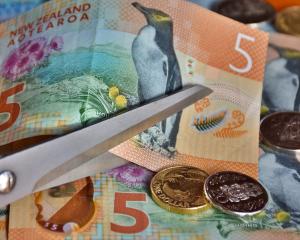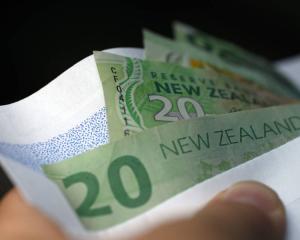The reported profit from continuing operations fell 18%, to $159 million, from $194 million in the previous corresponding period (pcp).
The reported bottom-line from all operations of $139 million was below Forsyth Barr's $154 million forecast.
Forsyth Barr broker Ken Lister told the Otago Daily Times the $139 million included a $20 million write-off of deferred tax assets which would not be utilised but had already been recognised.
Excluding that write down, the $159 million was 3% above his forecast.
Telecom chief executive Paul Reynolds announced a fully imputed dividend for the quarter of 7c a share would be paid.
The company would target an ordinary dividend ratio of about 75% of net earnings for the 2008 financial year.
However, there was a rider to the dividend announcement.
Subject to there being no adverse change in operating outlook, the dividend for the fourth quarter would be set to reflect the full-year targeted pay-out ratio, he said.
ABN Amro Craigs broker Peter McIntyre said that raised some questions for shareholders who had stayed loyal to Telecom because it was a good payer of a dividend - a yield rather than growth stock.
Those shareholders would consider selling the stock if they were expected to forgo some of their dividend as the company spent $1 billion a year over the next three years to roll-out new technology.
Telecom was widely held by overseas investors and the strength of the New Zealand dollar could also see some selling down of the shares.
"A high dollar is a time for overseas investors to get out and take the profit.
A low dollar sees them come in looking for cheap buying," Mr McIntyre said.
Dr Reynolds was optimistic in his presentation in Sydney yesterday.
"The past quarter has brought encouraging signs of progress and improvement, particularly in the ICT and broadband areas, against the backdrop of the strategy we outlined three weeks ago.
"This strategy is focused on building customer preference in our mobile, ICT and broadband capabilities."
In support of the strategy, investment for Telecom's long-term health and growth was now well under way.
Capital spending in the nine months to March was 13% above the pcp.
The accounts showed capital expenditure increased to $632 million in the nine months compared with $561 million in the pcp.
For the 2008 year, Telecom was forecasting capital expenditure of about $975 million.
Dr Reynolds said the investment included the roll-out of a world class broadband network and a WCDMA (wide band) mobile network.
He said the decline in earnings from continuing operations was driven by an anticipated reduction in traditional services revenue as a competitive market evolved rapidly.
"The quarter saw compelling pricing and other offers made in mobile and landline calling, and in broadband."
In New Zealand, broadband and Internet revenue in the quarter increased 22.3% on the pcp.
Total DSL (digital subscriber line) broadband connections increased by 40,000, with Telecom Retail securing 48%, bouncing back from 26% in the second quarter, Dr Reynolds said.
"Our overall performance for the March quarter was slightly better than expected, reflecting success with market share retention efforts, lower costs of sales in mobile and an improvement in ebitda in Australia, as the benefits of the AAPT-Powertel merger come through," he said.
Mr Lister noted that New Zealand earnings before interest, tax, depreciation and amortisation was 1.3% above his forecast at $466 million, on revenue 1.3% higher than forecast of $1.04 billion.
"Revenue was stronger than we expected in calling and IT services and to a lesser extent mobile.
We believe... [Telecom's] share of mobile revenue continues to drift down and is probably now around 40% versus a customer market share of around 48%."
Forsyth Barr did not change its full-year profit guidance from the April 10 briefing after yesterday's quarterly announcement, he said.












